Carcassonne is a city in two parts, divided by the Aude River. After visiting the Medieval City, I poked around the Bastide Saint Louis, which had its own historical notes to mention here.
Named after King Lous IX (later canonized as Saint), who authorized the construction of towns on the left bank of the Aude, the Bastide Saint Louis was built in 1260 but razed in 1355 by Edward, known as the Black Prince. It was rebuilt and fortified with a surrounding wall in 1359. By the 17th century, the moats were filled in and made into promenades and the fortified walls were opened. The drawbridge was converted in 1778 to the Portal des Jacobins, leading to the commercial and shopping district.
The Bastide Saint-Louis became the first cloth producer in the region in 1660, and the textile industry dominated the town between the 17th-18th centuries, peaking in 1810 when it became the center of cloth production in the Languedoc. I didn’t find any traces of that legacy, not a museum or even a token fabric store:)
The district’s main tourist point is Place Carnot and its Neptune Fountain, built in 1771 by Barata and Son at the behest of Louis XIV. The base is pink Caunes marble, the fountain itself is Italian white marble mined from the same quarry that supplied marble to the Versailles and the White House.

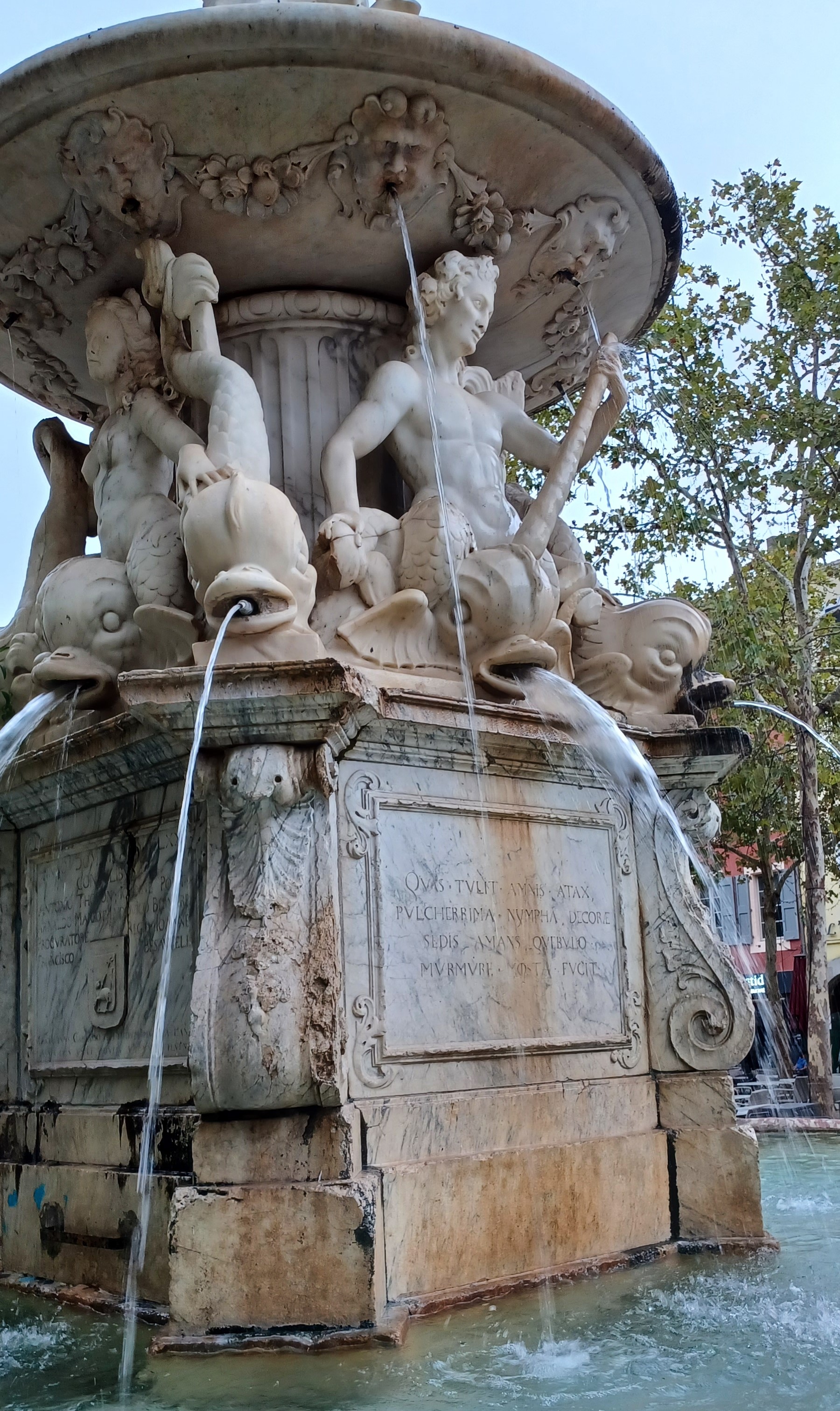
The buildings surrounding the square are colorful, with wrought iron balconies. There are a lot of shops and restaurants here, so if shopping is your thing, this part of town will be worth your while.
The Beau Arts Museum is housed in a building dating to the 16th century and houses modern works and religious artifacts in one wing, and a collection of some very large oil paintings in the other. I ducked in to get out of the rain, and found the ecclesiastical items and oil paintings of Renaissance clothing interesting enough to devote my findings to a separate blog which I will post to my Mercantile website.
There are artworks in the park in front of the museum, most notably “Helena” crafted by Raymond Sudre in 1905. Towards the other end of the park is a charming bronze boy on a swing, that you can actually push to make him swing. The park has a reflection pool with spitter fountains, and seating and offers a pleasant green space to relax in.
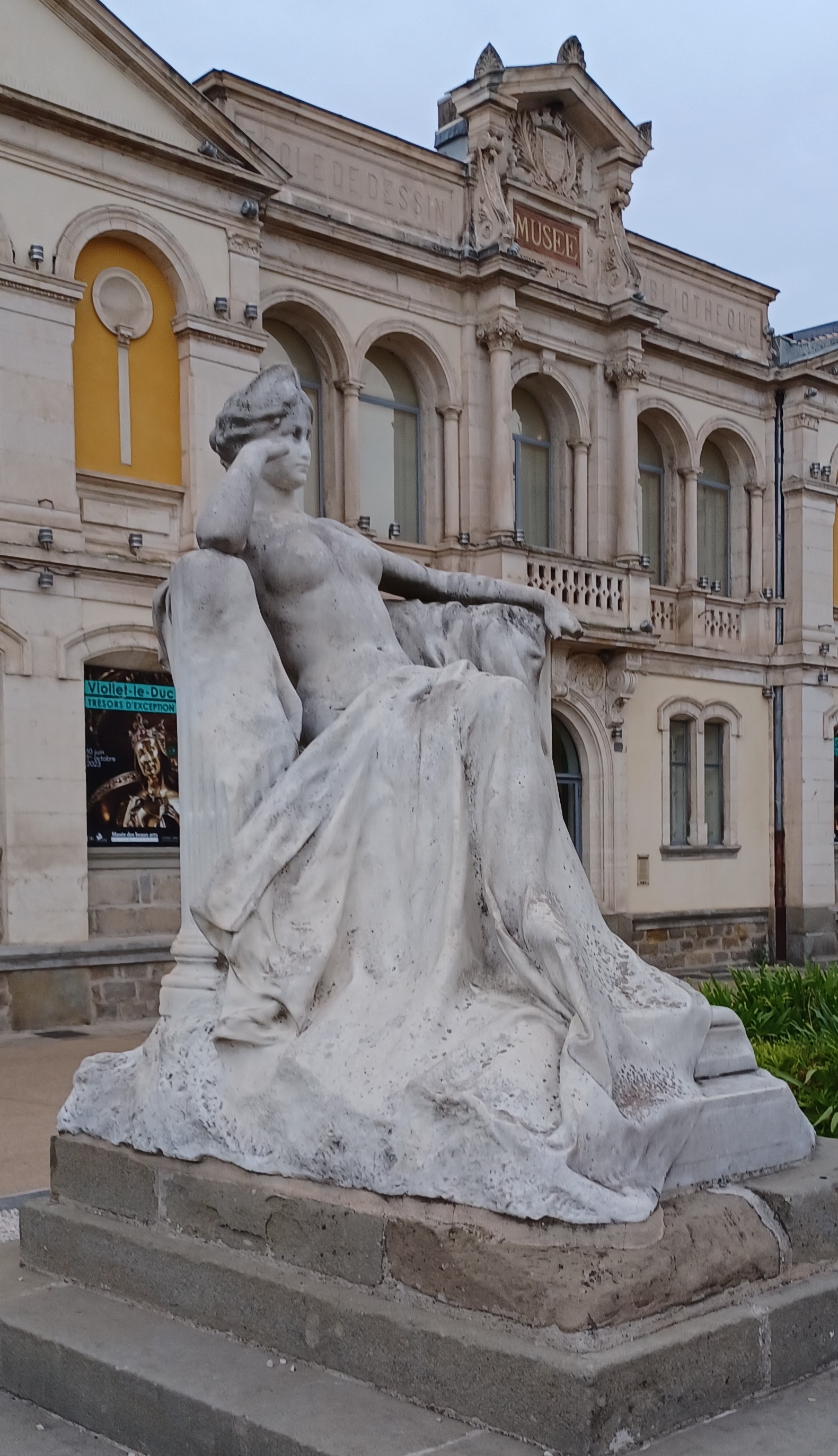
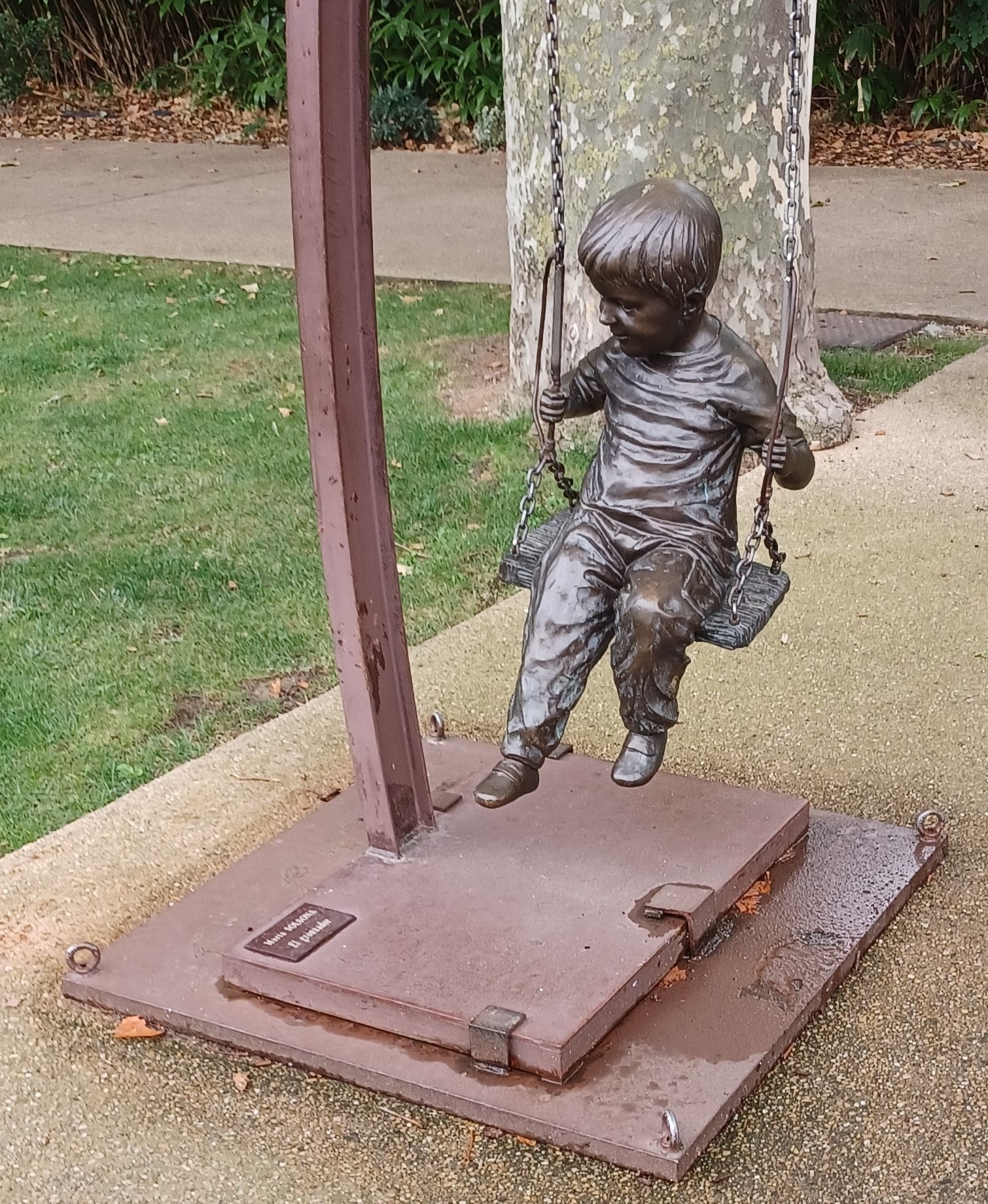
Outside of the square are several buildings of architectural interest, though I did not visit them specifically to find their histories or current usage.


There are several churches in the Bastide but the only one I got into was the Cathedral of St. Michel, a 13th century Gothic that was restored by Viollett-le-Duc after it was destroyed by fire in 1849.

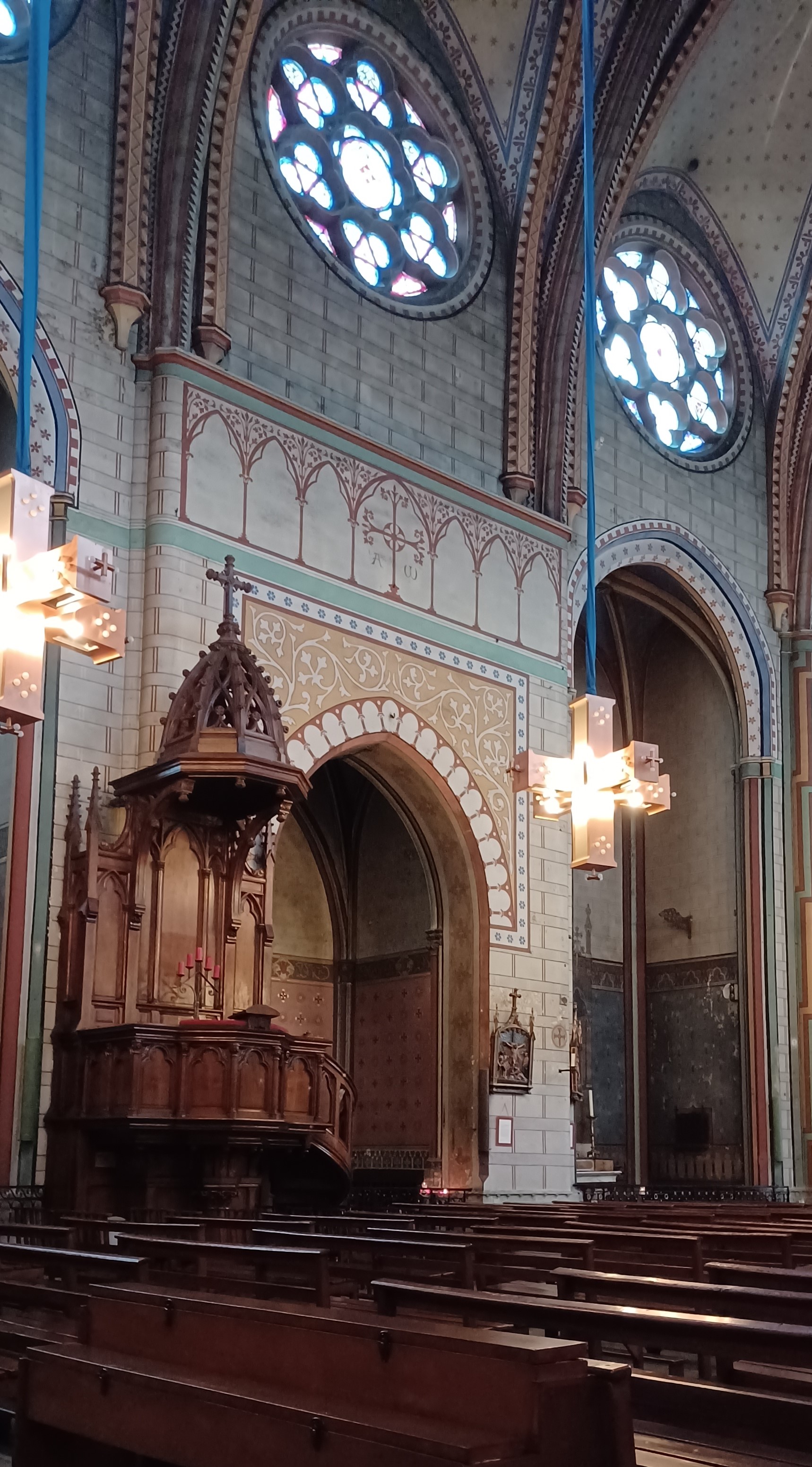
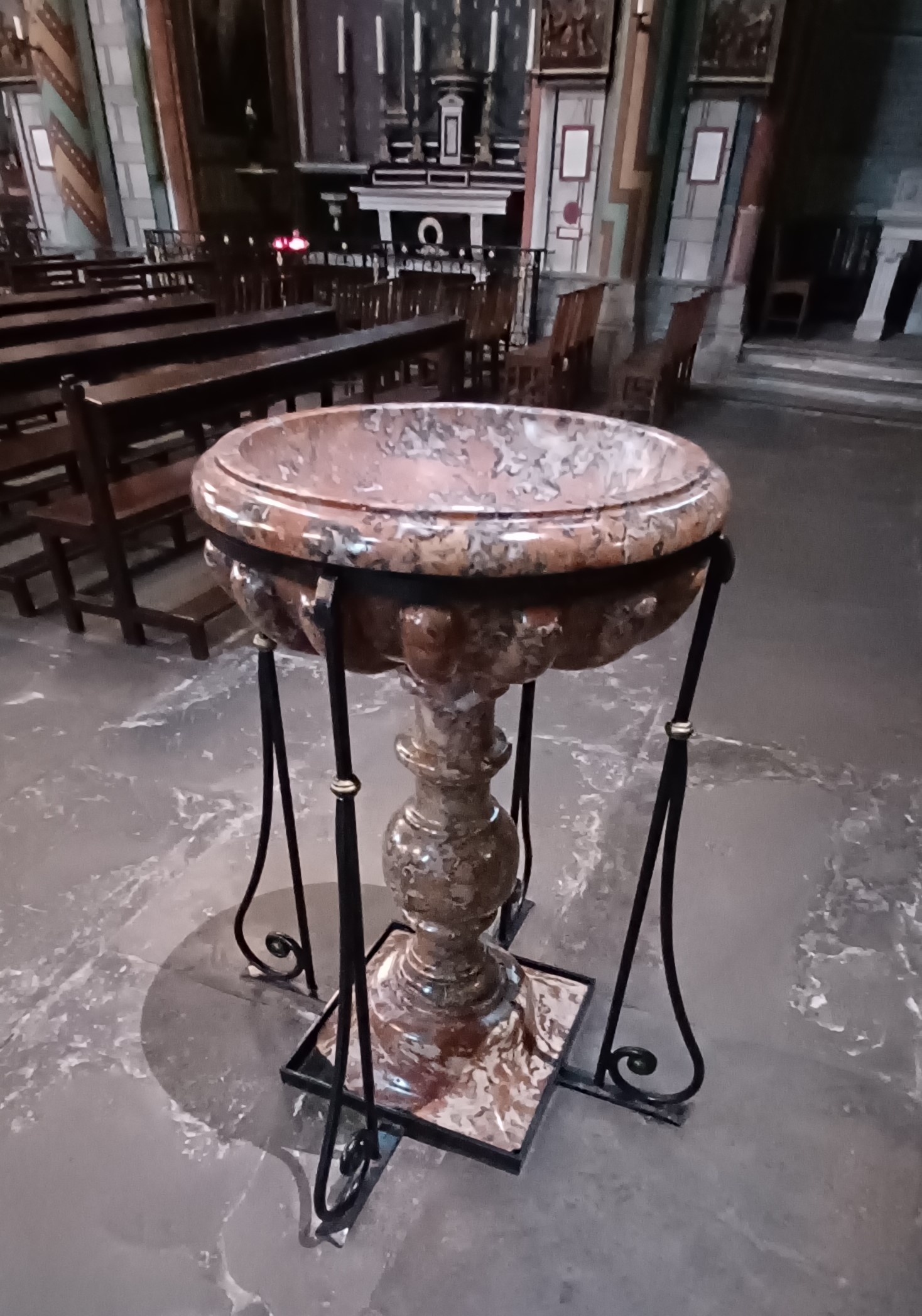
The tourist map offers self guided tours of Art Deco and Art Nouveau buildings. Below are the two best examples I found. The first is the public bathhouse in Art Deco style. The second has Art Nouveau inspired mosaics along the top, I think it is a Trade Union building.
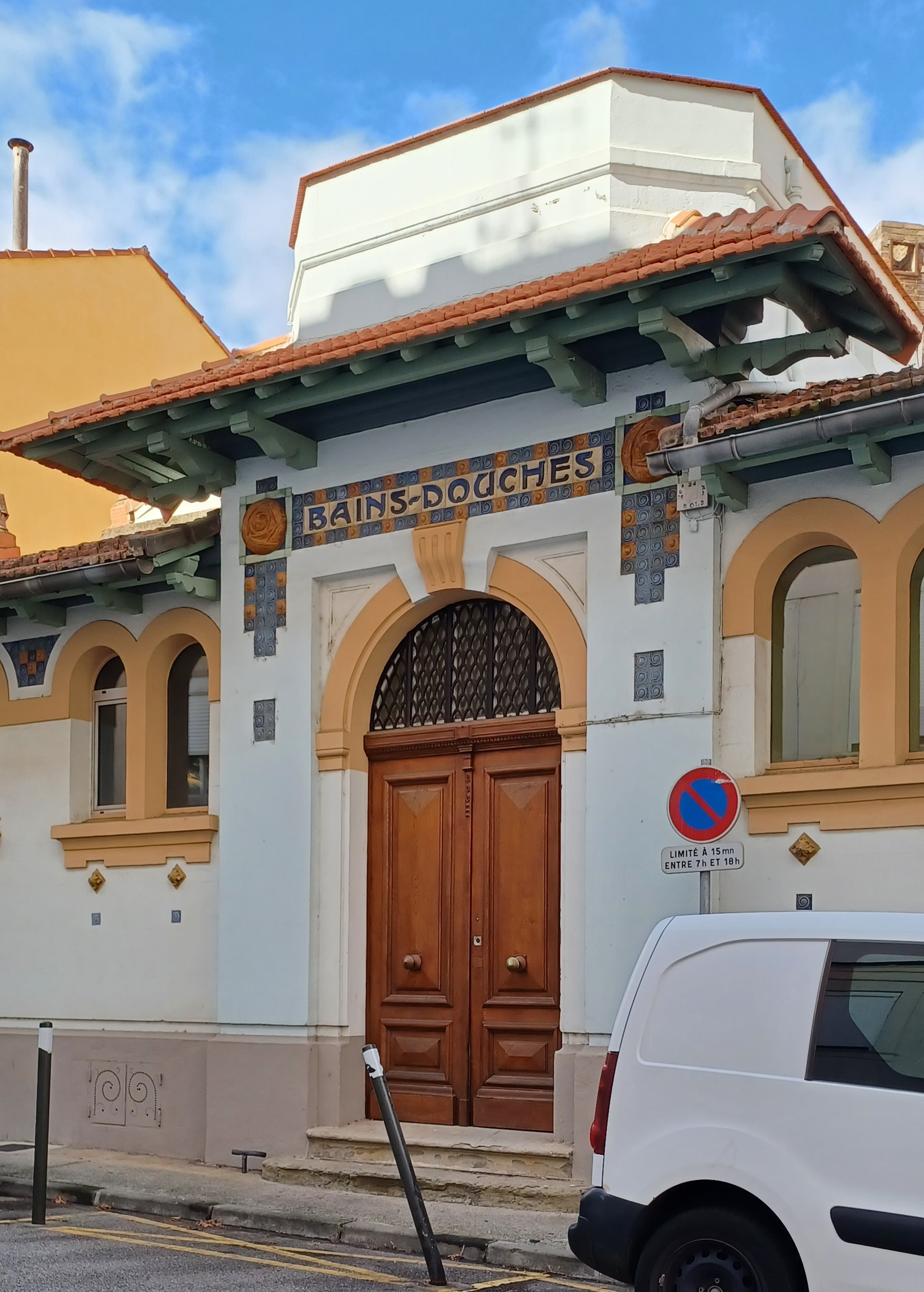

And, curiously, a building down one of the side streets with corbelling over an open air gallery with a ballustrade, an architectural feature I have only ever seen in Florence.

I spent my last day here, wandering around until my afternoon appointment for a boat tour of the Canal du Midi, part of a waterway that links the Mediterranean to the Atlantic. Although the tourist guides say it dates to the 17th century, this section actually dates to 1810, when a new route was dug from the existing Canal des Deux Mers. Once a commercial waterway, it is now strictly recreational.
My last dinner was one of the best – a regional dish called “Cassoulet” – a siege cooking dish believed to be based on a 12th century Arabic recipe. It’s a stew of white beans and mixed meats cooked in a terracotta bowl and is breathtakingly delicious.
Tomorrow I will be on a train before sunrise, to start the multi-leg trip back to the states. I mildly regret the places I didn’t get to – the Apocalypse Tapestry, Eleanor’s tomb, Avignon and the castles in the Dordogne and Cathar regions.
So much to see, so much to learn.
Au revoir France, I will remember you always. I am now inspired to learn to read French so I can delve into your history and literature, although I will always be tagged as Anglaise with every “Bonjour” I utter:)

Magnifique! “chef’s kiss”
LikeLiked by 1 person